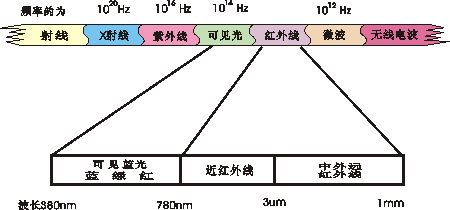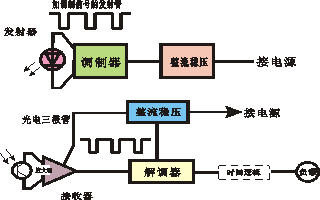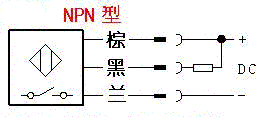|
The OP
Published on 2006-9-4 15:38
Only look at the author
This post is from MCU
| ||
|
|
||
- 【Posts】The slot-type photoelectric switch module does not respond at all. What is the reason?
- 【Posts】Could you please tell me which category this photoelectric switch belongs to?
- 【Posts】Photoelectric switch
- 【Posts】XD08M3232 infrared sensor microcontroller application field
- 【Posts】BMW Night Vision (Infrared Thermal Imaging) Camera Disassembly
- 【Posts】Infrared thermometer calibration method
- 【Posts】What model is this infrared receiver? Which model can be used instead? Thank you
- 【Posts】About the distance of infrared obstacle avoidance circuit
- 【Download】TCRT5000_Infrared reflective photoelectric sensor_Reflective photoelectric switch_Photoelectric pair tube_Special for tracking car
- 【Download】ITR8102 Everlight U-slot optocoupler, infrared beam-type diode, beam-type photoelectric switch
- 【Download】Infrared reflective photoelectric switch sensor.rar
- 【Download】Application of infrared photoelectric switch in conveyor belt speed test system
- 【Download】Infrared remote control alarm (schematic diagram + PCB diagram + program + instruction document).rar
- 【Download】Infrared optical communication device --- 2013 National College Student Electronic Design Competition.doc
- 【Download】2013 National Undergraduate Electronic Design Competition Topic F Infrared Optical Communication System.doc
- 【Download】Infrared remote control Proteus simulation circuit transmitting and receiving program
- 【Design】Commonly used photoelectric switches for electromagnetic guns
- 【Design】Through-beam photoelectric switch
- 【Design】LM393 voltage comparator photoelectric switch/photosensitive sensor 2-in-1 module
- 【Design】Four-way self-locking infrared remote control transmitter circuit
- 【Design】[Infrared-RF] conversion module - suitable for Xiaoai speaker pro and other speakers with infrared function
- 【Design】Handheld infrared thermal imaging
- 【Circuits】Infrared photoelectric switch circuit based on NE555
- 【Circuits】Infrared photoelectric switch circuit diagram
- 【Circuits】555 infrared photoelectric switch(2)
- 【Circuits】555 infrared photoelectric switch(1)
- 【Circuits】HT-7605 (alarm, lighting and industrial control) pyroelectric infrared receiving control circuit
- 【Circuits】HT-7605 (alarm, lighting and industrial control) pyroelectric infrared receiving control circuit
- 【Articles】Design and application of speed measurement system based on infrared photoelectric switch
- 【Articles】ROHM develops 1kW class high output infrared laser diode "RLD8BQAB3"!
- 【Articles】Guide Infrared Wafer-Level Packaged Detectors Have Been Mass-produced
- 【Articles】ams and Osram launch infrared laser for industrial lidar applications
- 【Articles】ams launches new family of VCSEL infrared flood illuminators for industrial market
- 【Articles】Working Principle and Industrial Application of Infrared Thermal Imager
-
Download with a reward: Meet the Master - Fluke\'s new expert-level infrared thermal imager
Eventtime:FromnowuntilApril15Howtoparticipate:1.Gototheeventpage>>>2(Youcanalsoapplyforafreetrialoftheproduct)PrizeSettingWithinonemonthaftertheendoftheevent,wewilldraw40luckywinnersfromallnetizenswhosubmittedtheformandgiveeachofthema ...
-
Evaluation and Award: Industrial-grade Intelligent Control MCU D133CBS
Firstofall,wewouldliketothankthenetizensforparticipatingintheevaluationactivityoftheindustrial-gradeintelligentcontrolMCUD133CBS(1)Netizenswhohavereceivedtheevaluationinvitationticketwillbesenttodayandcangotothepersonalevaluationcentertoche ...
-
How to implement screen rotation in Linux system? Tactile intelligent RK3568 Hongmeng development board demonstration
ThisarticleintroduceshowtorotatethescreenangleinLinuxsystemtosolvethedisplaymodeofdifferentproductformsDemonstrationusingtactileintelligentEVB3568Hongmengdevelopmentboard,equippedwithRockchipRK3568chip,quad-coreA55processor,mainfrequency20R ...
- 【Follow me Season 2 Episode 3】Advanced Task---Sample Program Adds Command Printing Information
- ET-XX6-A-XX-BT industrial control motherboard does not boot up
- Embedded graphical user interface ucGUI source code
- Arduino Bluetooth Obstacle Avoidance Car
- Automotive safety electronic technology terminology explanation: What is BA, ASR, EBD, ESP?
- AC Current Sensor = AC Current Transducer = AC Current Transducer
- The control motor is found to have insufficient stroke. Please provide a solution.
EEWorld Datasheet Technical Support
-
These exhibits at the Zhuhai Air Show are eye-catching
This year's Zhuhai Air Show is very popular. As an excellent stage for my country's military in
-
iPhone 17 series revealed to be the first to use 3nm A19 series chips: no chance of TSMC's 2nm process
On November 19, analyst Jeff Pu mentioned in a report that the iPhone 17 and iPhone 17 Air will b
-
The supply chain said that upstream components will be greatly reduced in price: Will domestic mobile phones take the initiative to reduce their prices after the current price increase?
On November 19, a report by market research firm GfK China showed that the average price of domes
- Nvidia joins hands with Google to accelerate the development of quantum computing processors
- Apple to spend nearly $100 million to lift Indonesia's iPhone 16 sales ban
- Nvidia's new generation Blackwell GPU is exposed to overheating problems, causing delivery delays
- my country is developing a six-legged moon landing robot: no worries even if the legs are broken
- Tata Motors acquires Pegatron's only iPhone factory in India, deepening cooperation with Apple
- Huawei's Strategic Department Director Gai Gang: The cumulative installed base of open source Euler operating system exceeds 10 million sets
- Problems with STM32 and passive buzzer playing sound
- Embedded Tutorial_DSP Technology_DSP Experiment Box Operation Tutorial: 2-28 Building a Lightweight WEB Server Experiment
- OPA847IDBVR op amp domestic replacement
- AG32VF407 Test UART
- [Digi-Key Follow Me Issue 2] Chapter 1: Sharing on receiving the goods
- What model is this infrared receiver? Which model can be used instead? Thank you
- Selling brand new unopened ZYNQ 7Z020 FPGA core board
- The LORA module used in the lithium battery-powered water meter setting can save energy when 100 water meters are installed in one corridor.
- I would like to ask, when a port is set to RX0, is it necessary to set the input and output direction of this port?
- Why is this year so difficult? It’s even more difficult than during the pandemic. I’m 30 and facing unemployment. I’m so confused.
- Ask about the voltage regulator test question
- [Xiaohua HC32F448 Review] About Xiaohua Semiconductor's UART interrupt sending and PRINTF construction and redirection
- 【BIGTREETECH PI development board】 HDMI output test
- 【BIGTREETECH PI development board】+08. Audio test (zmj)
- [Xiaohua HC32F448 Review] +RTC electronic clock
- Ask about the flyback switching power supply
- There are really more and more digital people, and it is hard to tell the real from the fake
- Canaan K230AI Development Board Review 8--Face 3D Network, Human Key Points, License Plate Recognition, Character Recognition, Object Recognition
- Embedded Engineer AI Challenge Camp (Advanced): Deploy InsightFace algorithm on RV1106 for real-time face recognition of multiple people
- # STM32H7S78-DK Development Kit Three-week Review: Implementation and Analysis of Simple Sound Collection and Storage Using SD Card Reading and Writing
- [STM32H7R/S] Review⑧ nano edge ai studio training a model--Part 1
- [2024 DigiKey Creative Competition] A "fortune-telling" artifact based on Raspberry Pi
- New energy vehicle on-board AC slow charging and maintenance
- Embedded Engineer AI Challenge Camp (Advanced): Deploy InsightFace algorithm on RV1106 for real-time face recognition of multiple people
- I want to make a self-driving car. I saw one on Bilibili that costs 300 yuan. I am hesitant.
- 参会有好礼 | 2024 瑞萨电子MCU/MPU工业技术研讨会
- 深圳站:11月30日(周六)深圳湾万怡酒店
上海站:12月06日(周五)上海喜玛拉雅酒店
奖励设置:现金红包、螺丝刀套装或30元京东卡
- Littelfuse 新品赋能电子产品安全可靠并高效, 10+挑战等你探索!
- Littelfuse 应用赋能星球,覆盖了诸多应用痛点及解决办法,邀请工程师一起探索,解锁更多设计力!
- 了解英飞凌新品AIROC™ CYW5591x 无线MCU,答题赢好礼!
- 无线键盘鼠标套装、智能音箱、登山包、收纳包
- 下载资料赢好礼!看Vicor模块化电源解决方案如何推动创新
- 活动时间:即日起-2024年12月31日
如何参与:点击活动页内您想了解的模块,找到资料下载即可参与抽奖,活动结束后统一发奖!
- 有奖活动|英飞凌高密度双相电源模块为高性能运算平台而生
- 活动时间:即日起-12月15日
活动奖励:蓝牙音箱、氮化镓充电器套装、黑色小背包
- 本周精选下载推荐:电源管理基础Dummies
- 本周小编给大家带来一本超简单、超干货的电子书——《电源管理基础Dummies》!内容深入浅出,排版舒服简洁,分分钟能get到电源管理最核心的知识内容。
EEWorld
subscription
account

EEWorld
service
account

Automotive
development
circle

About Us Customer Service Contact Information Datasheet Sitemap LatestNews
- I want to get started with fpga_editor, what should I do?
- I want to get started with FPGA software, what should I do?
- I want to get started with the SMT placement machine quickly, what should I do?
- I want to get started with MCU CF, what should I do?
- I want to learn how to get started with machine learning, what should I do?
- Please recommend some 51 MCU tutorials for beginners
- For the introduction of SCT microcontroller, please give a learning outline
- How to get started with 51 single chip microcomputer?
- How long does it take to get started with single chip microcomputer PLC
- How to get started with machine learning for beginners


 Room 1530, Zhongguancun MOOC Times Building,
Block B, 18 Zhongguancun Street, Haidian District,
Beijing 100190, China
Tel:(010)82350740
Postcode:100190
Room 1530, Zhongguancun MOOC Times Building,
Block B, 18 Zhongguancun Street, Haidian District,
Beijing 100190, China
Tel:(010)82350740
Postcode:100190
 京公网安备 11010802033920号
京公网安备 11010802033920号











 The slot photoelectric switch is usually a standard U-shaped structure, with the transmitter and receiver located on both sides of the U-shaped slot, forming an optical axis. When the detected object passes through the U-shaped slot and blocks the optical axis, the photoelectric switch generates a detected switch signal. The slot photoelectric switch is relatively safe and reliable, suitable for detecting high-speed changes and distinguishing transparent and translucent objects.
The slot photoelectric switch is usually a standard U-shaped structure, with the transmitter and receiver located on both sides of the U-shaped slot, forming an optical axis. When the detected object passes through the U-shaped slot and blocks the optical axis, the photoelectric switch generates a detected switch signal. The slot photoelectric switch is relatively safe and reliable, suitable for detecting high-speed changes and distinguishing transparent and translucent objects. 
 提升卡
提升卡 变色卡
变色卡 千斤顶
千斤顶